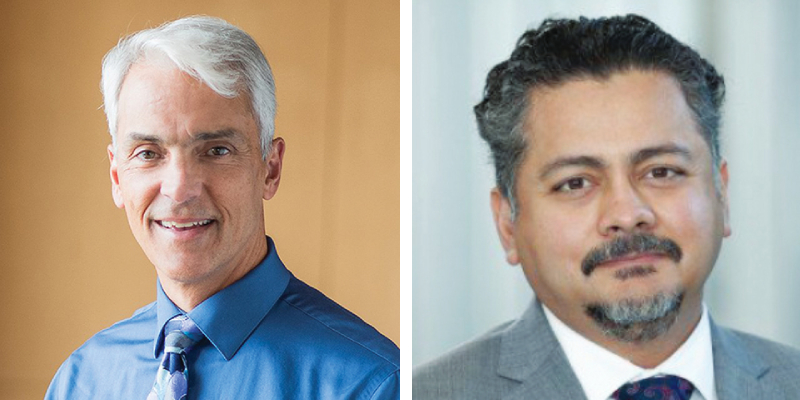
Thomas G. Martin, MD, Associate Director of the Myeloma Program at the Helen Diller Family Comprehensive Cancer Center at the University of California, San Francisco, and Saad Z. Usmani, MD, MBA, FACP, Chief of the Myeloma Service at the Memorial Sloan Kettering Cancer Center, debate treatment with chimeric antigen receptor (CAR) T cells versus bispecific antibodies in relapsed/refractory multiple myeloma (MM).
CAR T-Cell Therapy: Best Option for Patients
By Dr. Martin
The topic is CAR T-cell therapy versus bispecifics and which is the best option for patients. That’s an easy question for me to answer and let me tell you why. In the current treatment paradigm for patients with myeloma, they receive induction therapy followed by autologous transplant, for those who are eligible, and then everyone gets maintenance. It’s a continuous treatment model. Once relapse occurs, patients receive multiple regimens, class-switching agents with each subsequent relapse, and again patients continue treatment until progression. Eventually, patients are multiply relapsed or refractory, and this is the point where we’re now testing CAR T-cell therapies and bispecifics.
Both therapies have shown deep and durable responses in refractory patients, which are responses that we have never seen before. There is excitement for both CAR and bispecifics.
What is the best therapy option? Well, in fact, the best option for any individual patient requires a discussion between the doctor and patient. The fact that CAR T-cell therapy has been associated with an overall response rate (ORR) of 98% (CARTITUDE study) and is considered a “one-and-done” strategy—meaning that after CAR therapy, the patient gets to enjoy an “off” treatment period—typically has swayed the patient to CAR T-cell therapy.
I’ll digress and tell you that my first true “excitement” for CAR therapy in MM developed back in 2017 at the American Society of Clinical Oncology (ASCO) Annual Meeting, where we heard a presentation from Legend Biotech, a small company from China. They reported on 19 patients with relapsed/refractory MM treated with a B-cell maturation antigen (BCMA) CAR T-cell therapy. The ORR was 100%, quite impressive, and even patients with extramedullary disease had a response. After ASCO, one of the scientists from Legend came to our institution and asked if we would be interested in helping with development in the United States (of course).
A week later, a patient asked—and he was serious—if he could “get that CAR in China.” This was a triple-class refractory patient for whom we had run out of options. So, we asked Legend if we could send over a patient, and the answer was yes.
Thus, there was one patient from the United States treated on that LEGEND study in 2018 in China. Again, this patient was triple-class refractory with extramedullary disease (multiple plasmacytomas in the mouth). He left for China and was there for just over three months. When he came back, he was in complete remission and was minimal residual disease (MRD)-negative. That was a true turning point for me. Since then, I have favored the amazing responses from CAR T-cell therapy.
Now, many CAR studies have been reported, with generally positive data. The phase II KarMMa study, reported in The New England Journal of Medicine in February 2021, included patients with relapsed/refractory MM who were heavily pretreated and showed an ORR of 73%, and 26% of all patients achieved MRD negativity. The progression-free survival (PFS) in those receiving the highest dose of idecabtagene vicleucel (ide-cel) was about 12 months, and this study led to U.S. Food and Drug Administration approval of ide-cel. Two additional things I’ll point out: 35% of patients had high-risk cytogenetics, and 39% had extramedullary disease. Those are very impressive results for ide-cel in relapsed/refractory MM.
The second approved CAR-T therapy, ciltacabtagene autoleucel (cilta-cel), was approved based on the phase I/II CARTITUDE study. This study involved 97 patients with relapsed/refractory MM, 13% with extramedullary disease, 24% with high-risk cytogenetics, 88% triple-class refractory, and 99% refractory to their latest line of therapy. It showed an ORR of 98%. Of interest, the cilta-cel CAR contains two BCMA-binding domains, which may make a better immunologic synapse and may be responsible for such a high response rate. Follow-up data reported at ASCO in 2022 showed a PFS rate of approximately 57% at 27 months of follow-up, which is the longest PFS reported in this setting. Of note, this is 27 months off therapy!
We also need to consider the toxicities from each treatment. The two most common side effects after CAR therapy are cytokine release syndrome (CRS) and hematologic toxicity. CRS generally occurs within days to the first week or two and is seen in approximately 80% to 95% of patients. It’s generally grade 1-2, manageable, and resolves within three to four days of onset. We are very liberal with our use of tocilizumab (with first fever no matter the grade of CRS), and this has worked well. Cytopenia is also common and is a result of the fludarabine and cyclophosphamide chemotherapy and the cytokine storm from CRS. Grade 3/4 neutropenia, thrombocytopenia is common, as well as anemia. These side effects are also manageable and reversible, but they may be prolonged.
Neurologic toxicity is managed with steroids and is generally reversible. Specifically, with cilta-cel, late neurotoxicity can occur, including Parkinsonian-like symptoms and cranial neuropathies. These side effects occur approximately 10% of the time. Since CARTITUDE-1, the cilta-cel program mandated mitigation strategies, including prompt treatment of CRS and appropriate use of bridging chemotherapy to debulk the disease before CAR, and only one case of late neurotoxicity has been seen out of 200 cilta-cel patients.
Overall, the toxicity from CAR therapy is very manageable, and the biggest concerns from patients are access (there are not enough CAR slots for the demand, and too many patients are waiting) and logistics. It is very difficult for some patients to relocate to the CAR T-cell center for approximately one month. Bispecifics are easier to give because they are “off the shelf,” but they do require an inpatient stay, as the first few doses are also associated with CRS. We use tocilizumab to turn off CRS with bispecifics just like we do for CAR. So, the hospital stay is shorter, but bispecifics are not “one and done.” They require continuous therapy. Emerging data suggest that the continuous suppression of B cells with BCMA-directed bispecifics may be associated with greater infection risk. So, the benefit of being off therapy is a real “winner” and drives patients’ choices.
Cost is certainly an issue, and both therapies are expensive. However, if the median PFS for cilta-cel is 27 months, then the monthly cost is actually less than $18,000, which is approximately the cost of one month of lenalidomide maintenance. To put the nail in the coffin (so to speak), we are going to have so many ways to innovate with CARs, and the next generation of CARs will even be better. I think responses will be more durable, and patients won’t even have to be hospitalized for CAR therapy. It’s an easy choice: CAR, CAR, CAR.
Bispecifics Will Overtake CAR T Cells in Myeloma Treatment
By Dr. Usmani
The stance I have been asked to take is that bispecific antibodies will beat CAR T-cell therapies in MM, a very hot topic.
It’s not a matter of how but when the bispecifics will take a pole position in how we are managing MM out in the community. As a transplant cellular therapy doctor, I’m very comfortable saying that, because that’s where the care will eventually head. This will be a challenge we will have to accept, because we are still going to be developing cellular therapies for our patients. Why do I say that? Because there is a lot of promise to this T-cell redirection strategy, and CAR T-cell therapies have been very promising.
But bispecifics also give very high response rates. We’re still waiting for those CAR T-cell promises. We had the ide-cel approval that came in the spring of 2020. We had the cilta-cel approval that came in 2021. But the number of patients waiting for CAR T-cell therapy has not decreased. If anything, it’s compounded. This is a challenge for us, the transplant therapy doctors who are communicating with community physicians and managing those patients out in the community. Trying to get a CAR T-cell slot is a major challenge. We are still waiting for those promises to be delivered. To make the statement that CAR-T is a “one-and-done” strategy? Well, yes, until it’s not. We have to wait for our pharma colleagues to work this out and increase capacity. Get good quality products to us so we can say that those CAR-T promises are coming true and coming to fruition.
In this case, why wait for CAR T cells when bispecifics can get the job done, and perhaps even better than CAR T-cell therapy in terms of the safety profile? One of my patients had about 15 lines of treatment before he went on a BCMA-directed bispecific antibody in the summer of 2019. The patient came off after eight cycles because he had a propensity for pneumonias and upper respiratory tract infections and was admitted to the hospital with pneumonia right before COVID-19 was about to hit. That was two and a half years ago. The patient is still off therapy and MRD-negative by next-generation sequencing as well as flow. He’s never been off of therapy during his whole 20-plus years of myeloma survivorship.
If bispecifics can get you there, that’s your one and done. The advantage with bispecifics is you have many different platforms. You have the option of potentially modulating CRS by giving therapies at different frequencies and schedules. This is what a lot of companies are exploring right now. This is a major advantage compared with CAR T-cell therapies. We have CAR T-cell therapies targeting BCMA. The bottom line is all these bispecific therapies are giving you response rates well over 60%.
What CAR T-cell therapy data don’t tell you is the number of patients who were planned for apheresis or planned to get CAR T-cell therapy but never made it there. The total ORRs you see are for patients who got the CAR T-cell therapy. But if you change the denominator to the intended patient population, that number will dwindle. You get the impressive numbers with these bispecifics. You see ORRs are very high, 60% to 70%. Some are even approaching closer to 80%. The CRS is grade 1 and 2, it’s not grade 3 or 4. There is no funky neurotoxicity we currently see with any of the bispecifics, and that is a major advantage.
It actually pains me to point out the safety profile for CAR T cells, because I love the response rates. High-grade CRS, high-grade neurotoxicity, grade 3 or higher being seen with these BCMA-directed CAR T-cell therapies. We need to address this issue and identify the patients we can move away from CAR T cells toward the bispecifics. When our community colleagues look at this safety data and they look at the bispecifics, I think they will prefer using bispecific antibodies over the CAR T-cell therapies. Especially because we keep sending their patients back because we don’t have slots.
I think the landscape is going to change once the bispecifics make it to market. The other advantage with bispecifics is you can combine them with other therapies and get a higher bang for the buck. I’m just showing the teclistamab-daratumumab combination data. Even in daratumumab- or anti-CD38 antibody-refractory patients, you’re seeing very high ORRs. We need these data to mature, but you’re getting the same kind of PFS with teclistamab as you do with ide-cel. Why wait for CAR T-cell therapies over the bispecifics?
Bispecifics are now moving into the frontline setting. There are trials in the newly diagnosed transplant-eligible/post-transplant maintenance setting. There are trials in the transplant-ineligible setting that are being planned with teclistamab, specifically because it’s the most advanced in terms of its clinical development in myeloma. Many other bispecifics are coming on its heels, looking into early lines of treatment as well. If we start seeing these bispecifics come to the fore, I think it will be very challenging to propose CAR T-cell therapy as the go-to treatment for patients.
Then we have targets beyond BCMA. GPRC5D-directed bispecific antibodies are showing very good responses even in patients who’ve had prior BCMA exposure. They, too, can be combined with other therapies like daratumumab and show good activity in patients who have had progression on anti-CD38 monoclonal antibodies.
If I were to summarize my arguments here, there are a lot of bispecific platforms in clinical trials. Each of them is showing very good clinical activity. The major advantage we have with bispecifics is the off-the-shelf nature. If I’m seeing a patient in clinic today, the earliest I can get them a BCMA-directed CAR-T—one that’s commercially available or on a clinical trial—is about six or seven weeks from now. That’s under ideal circumstances. Whereas with a bispecific antibody, I can potentially have that patient treated this week. Why wait when you can get a good bang for your buck in terms of the responses and activity? You have therapies that are subcutaneously administered. Patients, after that initial CRS monitoring period, can go on with their lives without any quality-of-life issues or commitments to being vetted into the transplant cellular therapy program for about three months for follow-up.
The potential disadvantage is the continuous therapy model. The case that I mentioned tells you that you can discontinue bispecifics. There are clinical trials right now that are asking that question. If you get a sustained response, can you discontinue treatment with the bispecifics? That one-and-done approach, it’s not just something that we can say for CAR T-cell therapies. I think we’d be able to say it for bispecifics as well.
Then, moving into earlier lines of treatment, bispecifics can be combined with other mechanisms of action. That will be very hard to do with cellular therapies. So, for various reasons, I think bispecifics are going to play a big role in taking care of patients with myeloma and will beat not just CAR T-cell therapy, but may have the potential to beat autologous hematopoietic stem cell transplant (AHSCT) in the frontline setting.
The cost perspective and the access perspective are where the bispecifics can really make an impact. I think the cost of this therapy can potentially decrease, and it can be globally accessible because of the number of bispecific platforms that are in development.
I would make the case that, with the level of data we are seeing in clinical trials right now, bispecifics will likely replace CAR T cells and AHSCT in the newly diagnosed setting for the majority of patients.


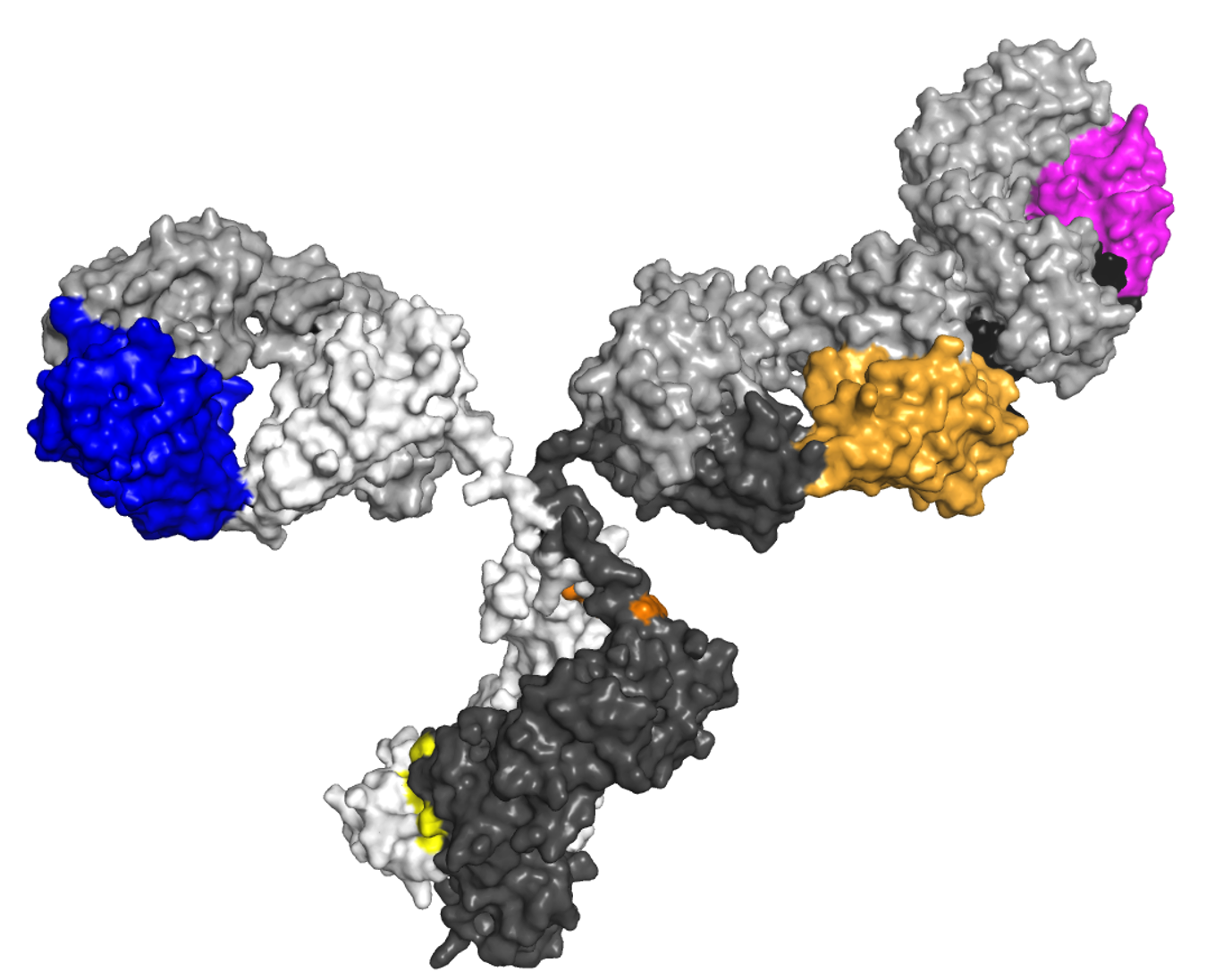
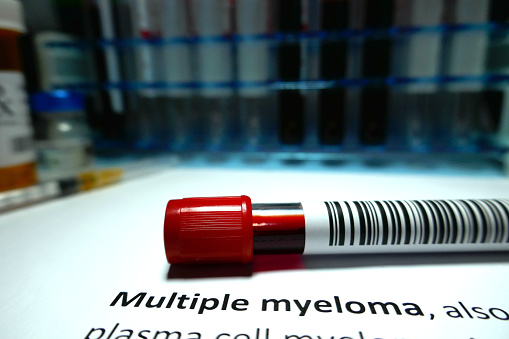
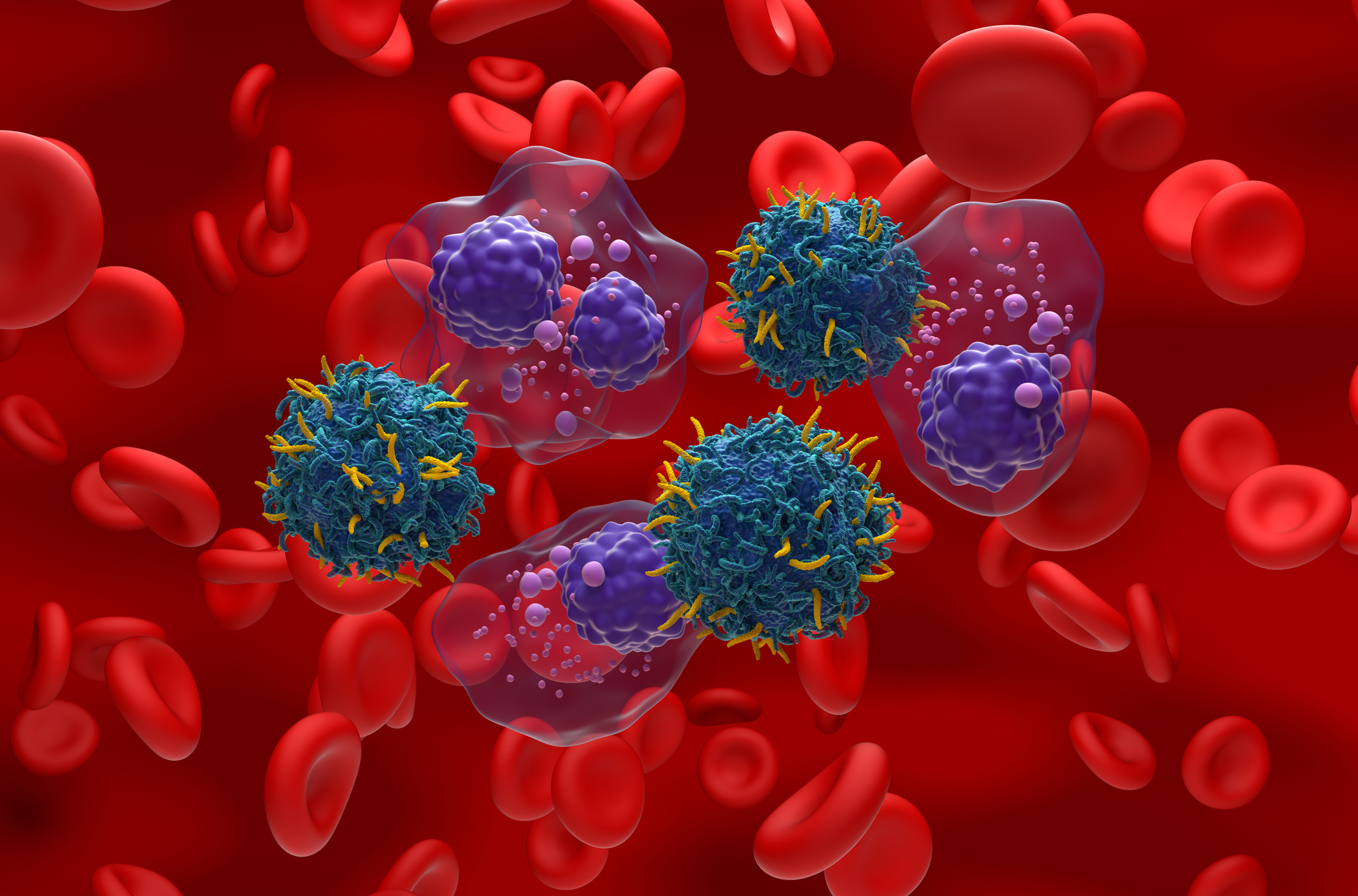
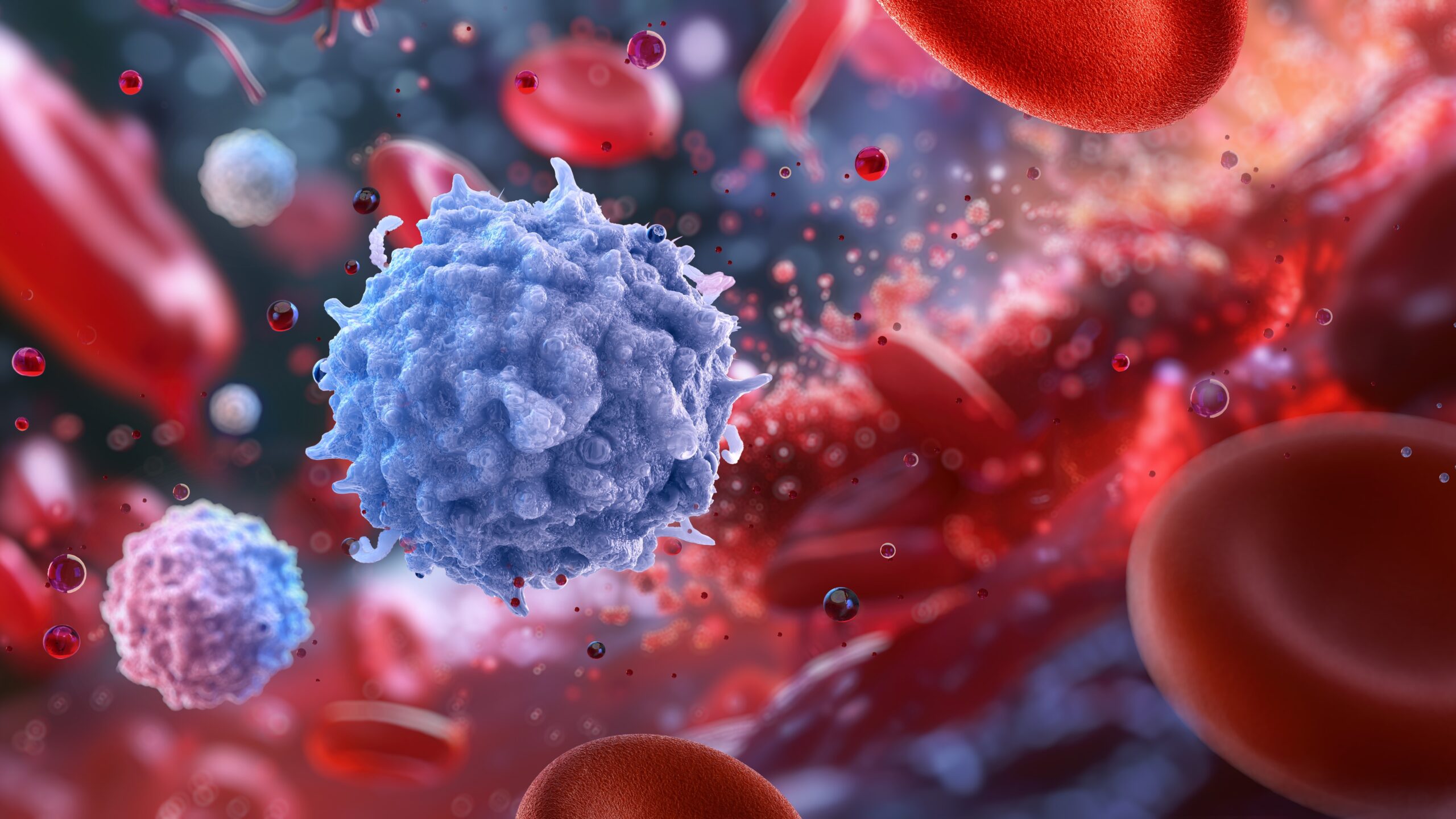
 © 2025 Mashup Media, LLC, a Formedics Property. All Rights Reserved.
© 2025 Mashup Media, LLC, a Formedics Property. All Rights Reserved.